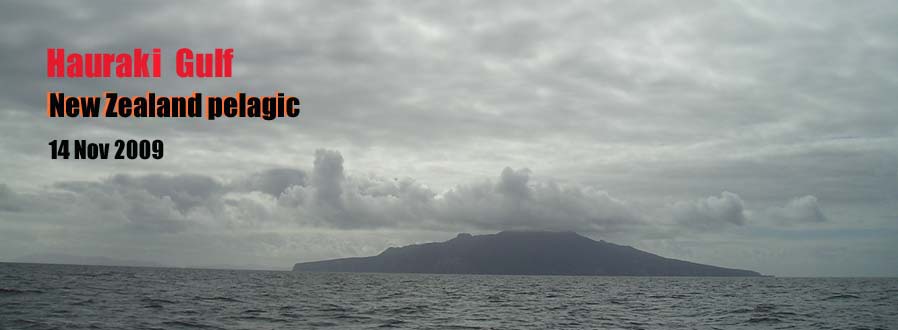
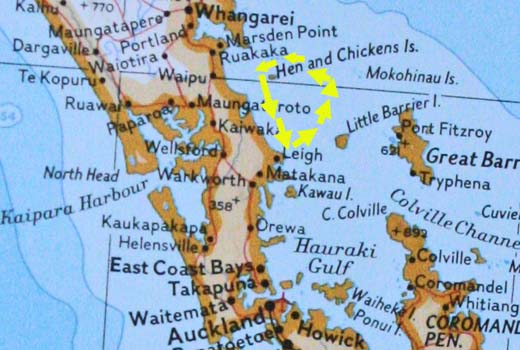 The primary purpose for my stop-over in New Zealand enroute to South Australia in Nov 2009 was a pelagic trip into the Hauraki Gulf. The 14 Nov trip was organized by Pterodroma Tours,
and was led by Karen Baird (below left), who was very knowledgeable
about petrels and their ecology. Only she and the skipper were from New
Zealand; the passengers were all tourists — two from the U.S. (Georgia
& California), three from the U.K., and one from Spain. We departed
from the little harbor at Leigh and circumnavigated the upper Hauraki
Gulf, passing close to Little Barrier Island (above) and then turning into the wind to circle that Hen & Chicken Islands
(photo second row below). We even stopped on the lee side of Hen Island
(below right) to observe and listen to native New Zealand land birds.
We heard Saddleback, re-introduced elsewhere, but here, on Hen Island,
a remnant and entirely wild population is still extant.
The primary purpose for my stop-over in New Zealand enroute to South Australia in Nov 2009 was a pelagic trip into the Hauraki Gulf. The 14 Nov trip was organized by Pterodroma Tours,
and was led by Karen Baird (below left), who was very knowledgeable
about petrels and their ecology. Only she and the skipper were from New
Zealand; the passengers were all tourists — two from the U.S. (Georgia
& California), three from the U.K., and one from Spain. We departed
from the little harbor at Leigh and circumnavigated the upper Hauraki
Gulf, passing close to Little Barrier Island (above) and then turning into the wind to circle that Hen & Chicken Islands
(photo second row below). We even stopped on the lee side of Hen Island
(below right) to observe and listen to native New Zealand land birds.
We heard Saddleback, re-introduced elsewhere, but here, on Hen Island,
a remnant and entirely wild population is still extant.
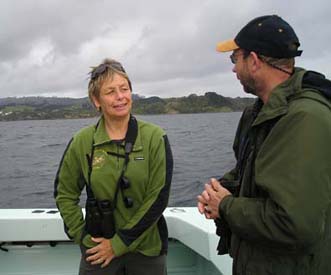 |
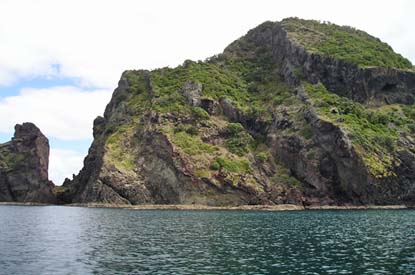 |

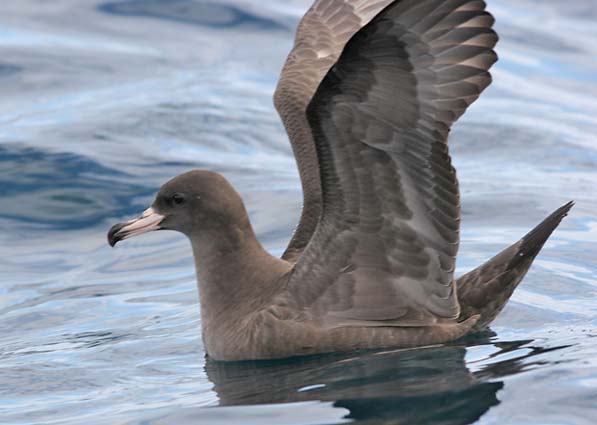 Haurake
Gulf is known for shearwaters, petrels, and storm-petrels; it is not a
locale for huge albatross, as are some pelagic destinations farther
south in New Zealand. The only really large seabird we encountered was
a single Northern Giant-Petrel. Three shearwaters were present in fair
to good numbers: Flesh-footed (right), Fluttering (below left), and Little (below right).
Haurake
Gulf is known for shearwaters, petrels, and storm-petrels; it is not a
locale for huge albatross, as are some pelagic destinations farther
south in New Zealand. The only really large seabird we encountered was
a single Northern Giant-Petrel. Three shearwaters were present in fair
to good numbers: Flesh-footed (right), Fluttering (below left), and Little (below right).
Flesh-footed, of course, occurs in small numbers during my regular trips on Monterey Bay, California, but the latter two species recall small shearwaters in the Manx/Black-vented group. Note the very long bill on Fluttering and the white face on Little. The race of Little here is Puffinus assimilis haurakiensis, a member of the nominate "P. assimilis" group when the likely split of Little Shearwater occurs in the future.
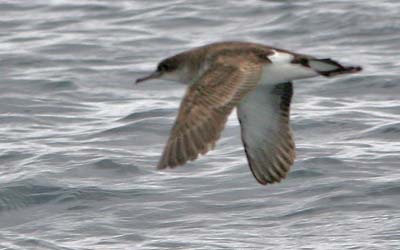 |
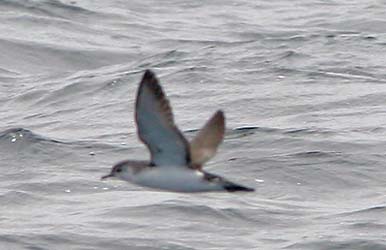 |
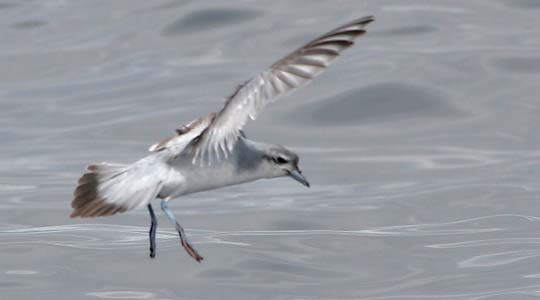 Also present in fair numbers was Fairy Prion (left).
Also present in fair numbers was Fairy Prion (left).
Little Barrier Island is the breeding grounds for Cook's Petrel (next two rows below), so it was great to get snaps of it against the backdrop of this island (just below). Having written a paper on the identification and distribution of small 'Cookilaria' petrels in the eastern Pacific, it was really nice to finally observe one species around its nesting islands. We searched hard to Pycroft's Petrel (which nests on the Hen & Chickens) but failed to find any with a suspiciously short bill.
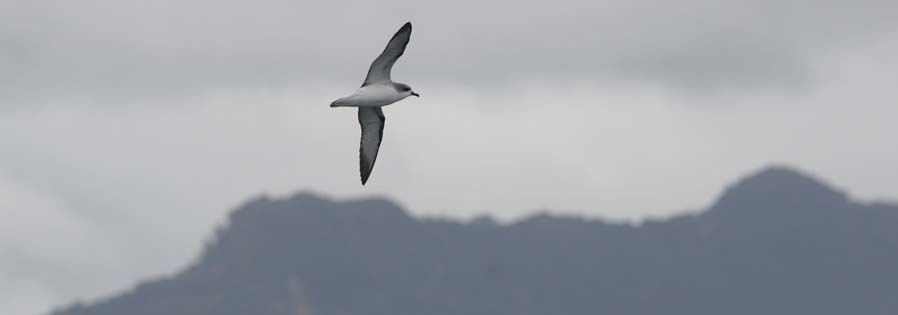
 |
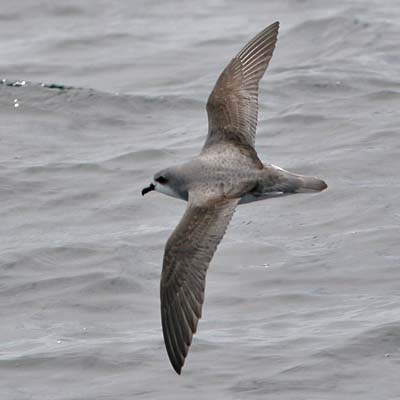 |
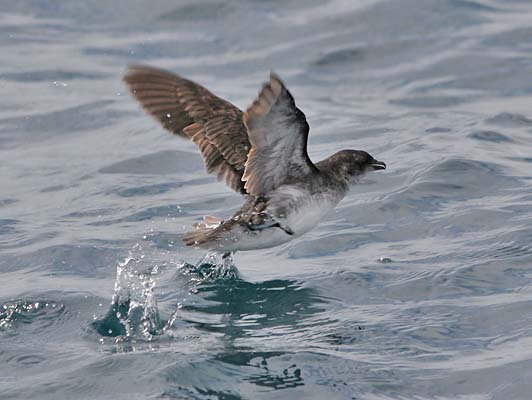 A new species for me was Common Diving-Petrel (left); its size, shape, pattern and behavior (preferring to dive than fly) reminded me of Cassin's Auklets on Monterey Bay.
A new species for me was Common Diving-Petrel (left); its size, shape, pattern and behavior (preferring to dive than fly) reminded me of Cassin's Auklets on Monterey Bay.
Parkinson's Petrel (below) was an old friend from cruises in the tropical eastern Pacific, where it has an odd commensual relationship with medium-sized whales, such as pilot whales or killer whales (it follows them and presumably eats their leftovers). Here in New Zealand it is usually called "Black Petrel," a truly terrible name — the other south Pacific Procellaria petrels are equally black. I was surprised to note how similar in size, bulk and flight style Parkinson's Petrel was to the many Flesh-footed Shearwaters nearby, although the bill difference do give it away. We only had one Parkinson's on this trip, but it came in to the chum and was often the closest bird to the boat.
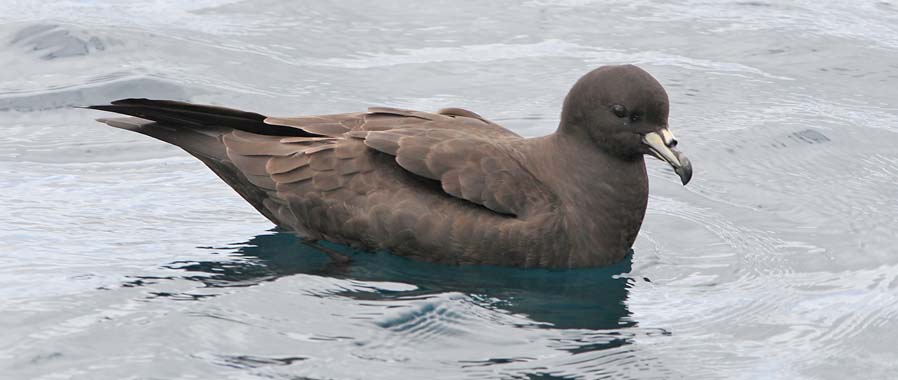
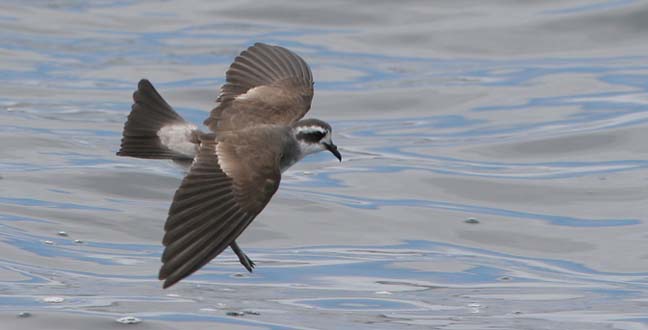 The most impressive birds on the Hauraki Gulf were the storm-petrels. We had wonderful and prolonged views of White-faced Storm-Petrel
(left & below). This amazing storm-petrel uses its very long legs
to 'push off' of wavelets, thus bounding and gliding across the surface
of the sea as if on a pogo-stick. I'd only had one brief encounter
before, in the eastern tropical Pacific, so the Hauraki Gulf
storm-petrel show was superb. My conservative estimate was 70 birds,
but it could easily have been more.
The most impressive birds on the Hauraki Gulf were the storm-petrels. We had wonderful and prolonged views of White-faced Storm-Petrel
(left & below). This amazing storm-petrel uses its very long legs
to 'push off' of wavelets, thus bounding and gliding across the surface
of the sea as if on a pogo-stick. I'd only had one brief encounter
before, in the eastern tropical Pacific, so the Hauraki Gulf
storm-petrel show was superb. My conservative estimate was 70 birds,
but it could easily have been more. 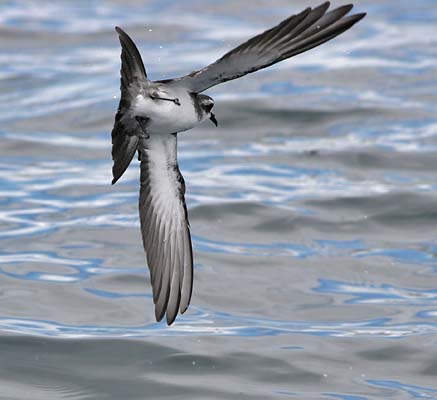 |
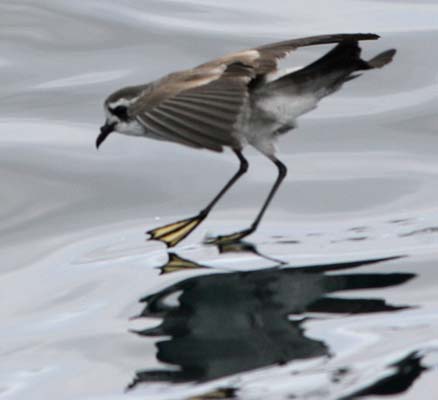 |
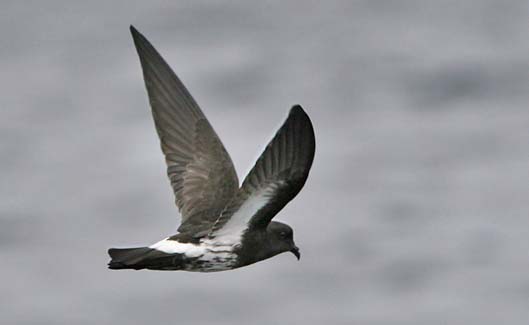 And
finally, among the many White-faced Storm-Petrels attracted to the chum
laid out for them, was suddenly the bird we had most wanted to see: New Zealand Storm-Petrel
(left & below). A few were collected in the 1800s but it
disappeared from the known avian world thereafter and was considered
extinct. It was only re-discovered in the Hauraki Gulf in 2003, and now
appears to be regular there in the austral summer. It seems likely to
nest there but that has yet to be proven (see more on Pterodroma Tours website). We had lengthy view of at least three birds, and I was very happy blasting away with my camera.
And
finally, among the many White-faced Storm-Petrels attracted to the chum
laid out for them, was suddenly the bird we had most wanted to see: New Zealand Storm-Petrel
(left & below). A few were collected in the 1800s but it
disappeared from the known avian world thereafter and was considered
extinct. It was only re-discovered in the Hauraki Gulf in 2003, and now
appears to be regular there in the austral summer. It seems likely to
nest there but that has yet to be proven (see more on Pterodroma Tours website). We had lengthy view of at least three birds, and I was very happy blasting away with my camera.
See the trip list page for a full list from this pelagic trip.
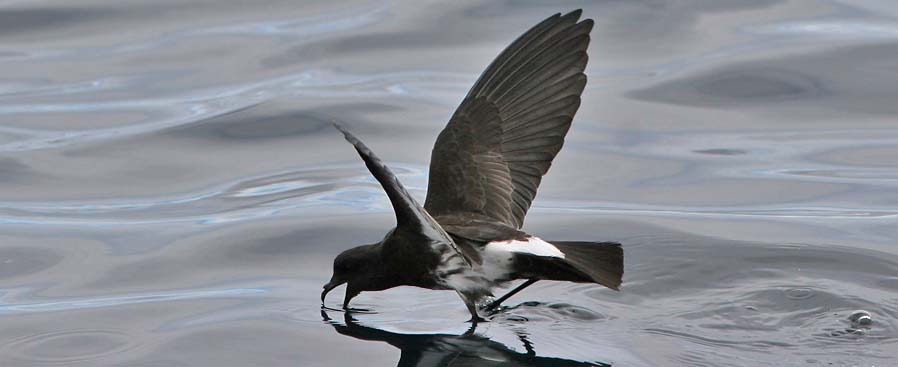
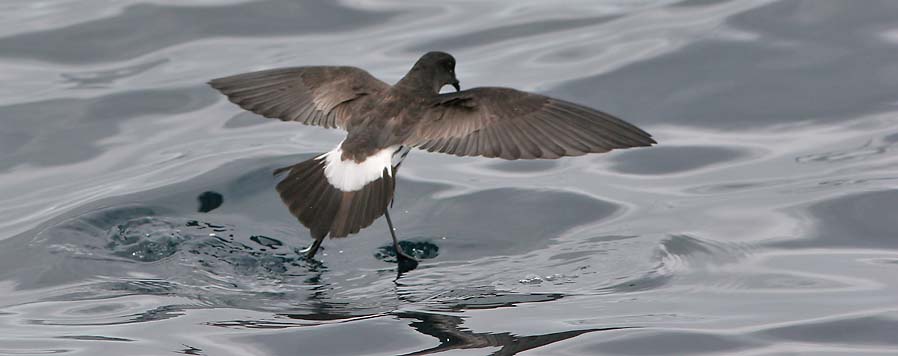
New Zealand Haurake Gulf Pelagic |
|
New Zealand Tiritiri Matangi |
|
page created 15 Mar 2010
|
© Don Roberson 2009 |